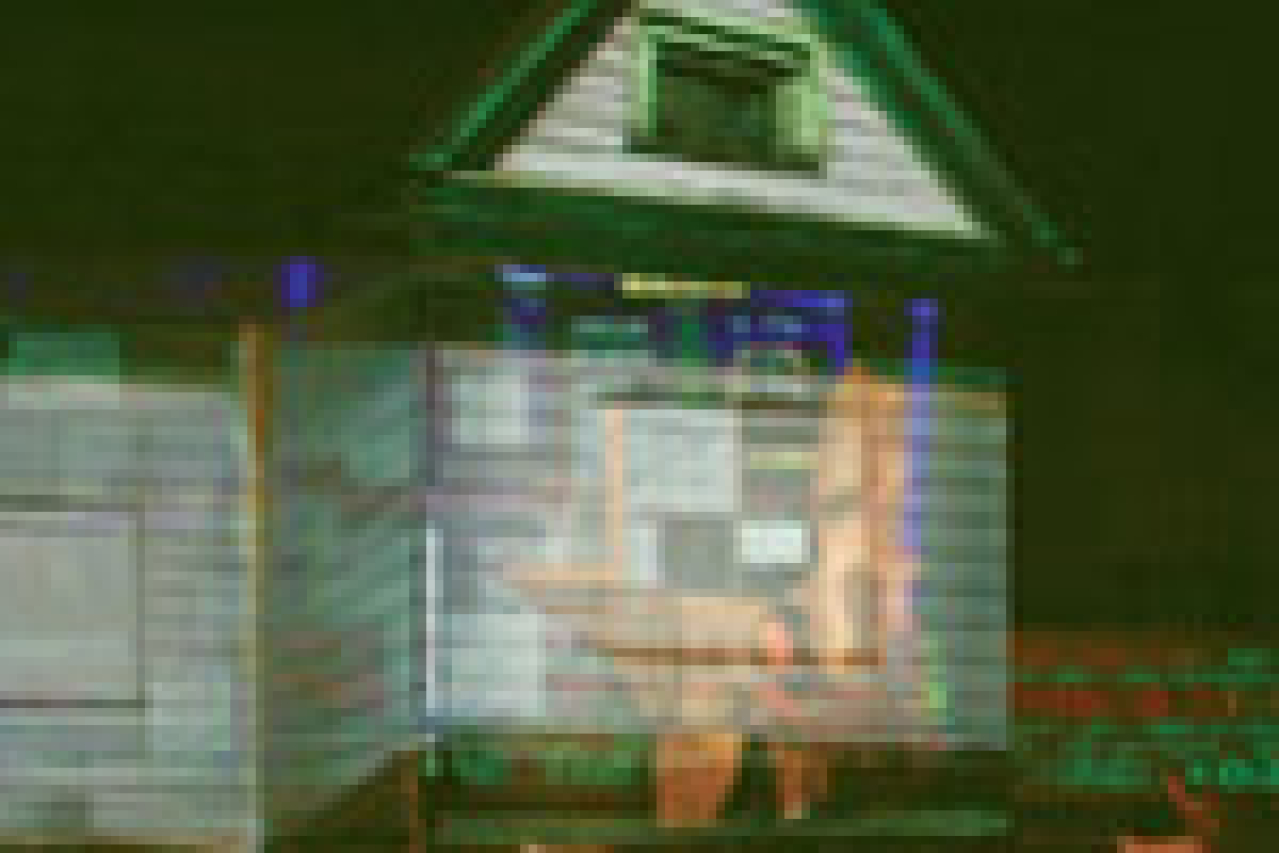House/Divided

(© James Gibbs)
The electronic glow of 21st-century stock market tickers alternate with sepia-toned film footage of the Depression-era Dust Bowl in The Builders Association’s House/Divided, now at BAM Harvey Theater. The ambitious but not entirely successful work utilizes language and characters from John Steinbeck’s The Grapes of Wrath, while drawing parallels to our more recent foreclosure crisis and recession.
Co-writers Moe Angelos (who also performs in the piece) and James Gibbs, working with director Marianne Weems, have certainly unearthed a wide range of rich material. Among the most intriguing are projected interviews with real individuals involved in varying stages of the foreclosure process – from a woman losing her home, to a low-income housing developer, to a guy who goes in to clean out the remnants of vacated houses.
But strangely enough, the onstage story of the Joads – the displaced family at the heart of Steinbeck’s novel – does not have the emotional heft that it should. The actors often deliver their lines in a nearly affectless manner, making it difficult to connect to the plight of the hard-traveling “Okies,” looking for a better life in California after being evicted from their farm.
There are still some striking moments, such as a speech delivered by Rose of Sharon (LaToya Lewis), who stands perfectly still as a close-up of her face is simultaneously projected onto the screen behind her. But the story of Tom Joad (Jess Barbagallo), the novel’s protagonist, is not sufficiently developed.
Modern-day scenes involving a pair of investment managers (played by Barbagallo and Sean Donovan) witnessing the market decline of companies like Lehman Brothers and Goldman Sachs successfully convey the uncertainty felt by many who suddenly find their once secure livelihoods threatened. But these characters don’t really have any dimension to them and are simply there to underscore the socioeconomic shifts of the present day.
There is an impressive amount of technology on display within the theater, primarily through Austin Switser’s stunning video design, projected onto John Cleater and Neal Wilkinson’s set. For those with smartphones and certain other mobile devices, the production offers a segment where the onstage imagery is supplemented by a layer of “augmented reality” viewable utilizing a free app called “Layar.” It’s a cool effect, but not crucial to the performance.
Far more germane to the actual viewing experience is the amount of coordination it takes to keep all the technological elements running as they should. On opening night, an unspecified glitch halted the performance for about five minutes. And as the audience and actors waited for the action to re-commence, it was impossible not to think about how the liveness of the performance felt secondary to the media-heavy spectacle.











